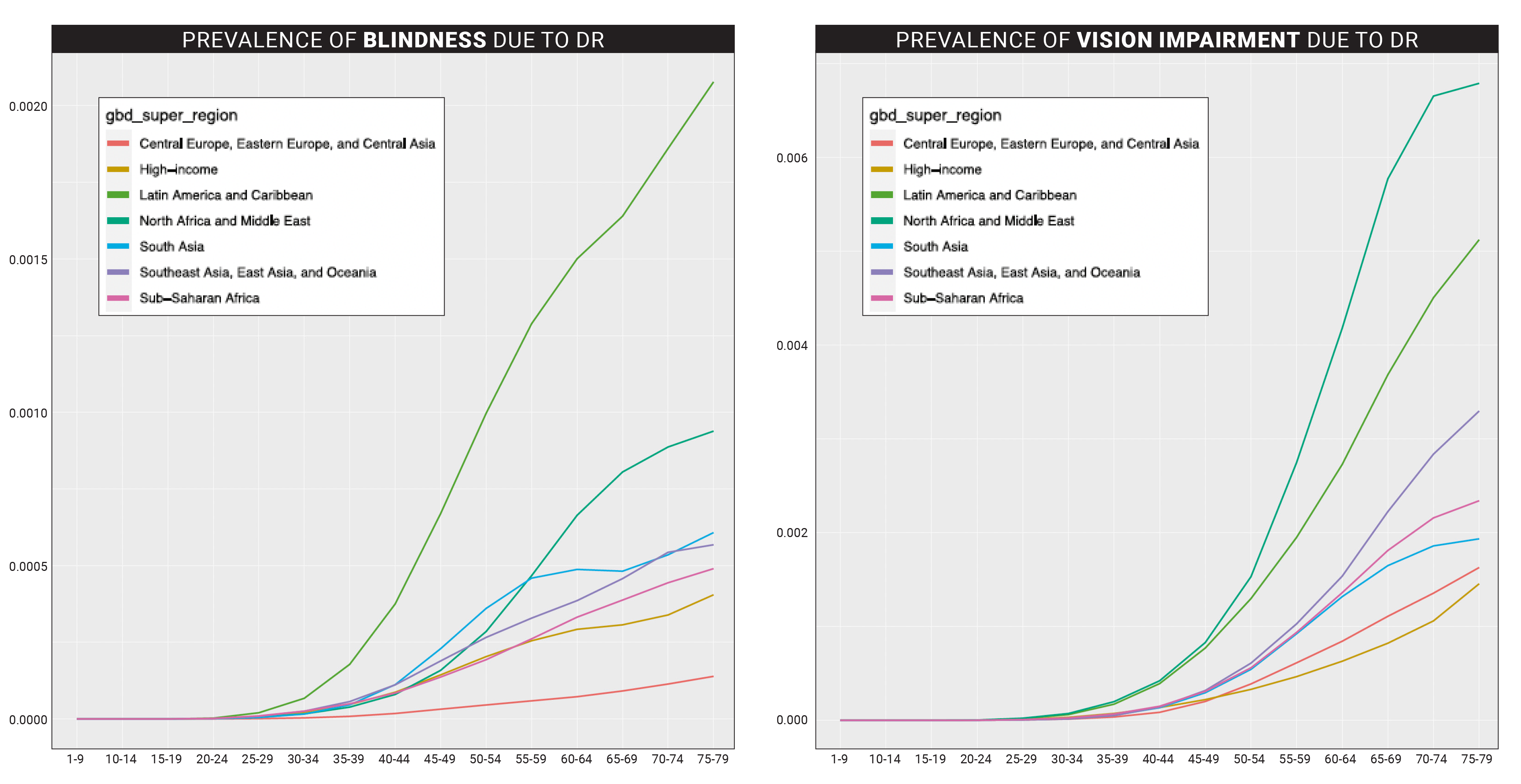The prevalence of diabetes mellitus has been growing worldwide and, with it, vision loss from diabetic retinopathy as well.1 Recently, an international group of researchers worked together to gather data from large multi-nation areas, or super-regions, and on a global scale for a new meta-analysis of vision loss in diabetic patients from 2000 to 2020. Each study had to provide data on patients with moderate or severe vision impairment (visual acuity of <6/18 to ≥3/60 on the Snellen chart) and blindness (acuity of <3/60) to be included in the analysis. A total of 137 studies were identified and included.
“Our report provides an update on the worldwide and regional estimates for diabetic retinopathy–related blindness and moderate or severe impairment, including the changing patterns over time,” stated the researchers in their paper for the British journal Eye. “It demonstrates that considerable regional differences and sex inequalities exist, highlighting areas that require particular attention such as low resource settings.”
 |
|
“Given the rapid global rise in diabetes and increased life expectancy, DR is anticipated to persist as a significant public health challenge,” the researchers wrote in their paper. Photo: Vision Loss Expert Group of the Global Burden of Disease Study, the GBD 2019 Blindness and Vision Impairment Collaborators. Eye. June 27, 2024. Click image to enlarge. |
According to the researchers’ global estimates from 2020, approximately 1.07 million patients were blind and another 3.28 million were diagnosed with moderate or severe impairment.2 They found that the prevalence of blindness and vision impairment were higher in female patients than in male patients. In 2020, it was estimated that 462,00 male and 611,000 female diabetic patients of all ages had diabetic retinopathy cases that resulted in blindness. Additionally, 1.4 million male and 1.8 million female subjects of all ages had either a moderate or severe visual impairment brought on by their condition.
When assessing the data at a regional level, the researchers discovered something contradictory to a similar study performed in 2010 by the same group.3 Initially, high-income super-regions were associated with a low prevalence in blindness for patients with diabetic retinopathy. Now, researchers have found that the prevalence of blindness in this category is one of the highest (5.37%), just behind Latin America and the Caribbean (6.95%). They believe this is due to an increase in population compared to the 2010 study.
The prevalence of moderate or severe impairment was also assessed at a regional level. The North Africa and Middle East super-region had the highest prevalence at 2.12%, followed by Latin America and the Caribbean with 1.84%.
The researchers also reported that changes in blindness and vision impairment continued to be greater for female vs. male patients between 2000 and 2020. Through the decades, South Asia was observed to have the highest prevalence for blindness in its female population, while moderate or severe vision impairment in female populations were highest in Southeast Asia, East Asia and Oceania.
“This study contributes to the expanding body of literature on the burden of diabetic retinopathy, highlighting the need for increased global attention and investment in this research area,” the authors wrote in their paper. These findings could aid governments in developing region-specific diabetic retinopathy healthcare policies to prevent vision impairment, especially among female diabetes patients, the authors contend.
“Though there are age-adjusted declines in DR prevalence for some super-regions, the overall global crude prevalence of both DR-related blindness and DR-related MSVI for males, females, and overall has increased globally due to aging and growth of the population. These figures represent the true burden of disease with which governments must contend.”
1. Lin X, Xu Y, Pan X, Xu J, Ding Y, Sun X, et al. Global, regional, and national burden and trend of diabetes in 195 countries and territories: an analysis from 1990 to 2025. Sci Rep. 2020;10:14790. 2. Vision Loss Expert Group of the Global Burden of Disease Study, the GBD 2019 Blindness and Vision Impairment Collaborators. Global estimates on the number of people blind or visually impaired by diabetic retinopathy: a meta-analysis from 2000 to 2020. Eye. June 27, 2024. [Epub ahead of print]. 3. Leasher JL, Bourne RRA, Flaxman SR, Jonas JB, Keeffe J, Naidoo K, et al. Global estimates on the number of people blind or visually impaired by diabetic retinopathy: a meta-analysis from 1990 to 2010. Diabetes Care. 2016;39:1643-9. |


